Pitch Recognition Secrets Discovered: Dr. Peter Fadde Interview
A Simple Way To Train Pitch Recognition That Works For Collegiate & Pro Hitters
Dr. Peter Fadde applies sports science to batting drills focusing on pitch recognition. He’s a Professor in Learning Systems Design & Technology at Southern Illinois University.
CLICK HERE for a great case study featured in the Baseball Collegiate Newspaper titled, “Pitch Recognition Can Be Done By Hitters”, where Dr. Peter Fadde was asked to consult with Southeast Missouri State hitting coach Dillon Lawson on the subject of pitch recognition with his hitters, in March of 2014.
I heard about Dr. Peter Fadde through a few of my readers who saw him speak at the 2015 ABCA conference (ABCA “Doing Damage at the Plate by Training Pitch Recognition” video above).
Since, I’ve read his ebook “The 6th Tool: Training Baseball Pitch Recognition” in less than an hour, corresponded with him via email, and felt it a MUST to put together an interview with him sharing his insights with you.
(NOTE: if you purchase his ebook, and after reading it you like what he has to say, PLEASE leave him a review on Amazon.)
You can see the presentations he’s done, recognition he’s earned, and his current work at his website:
Here are some other places you can find him online:
- Twitter: @DrFadde
- Linkedin: https://www.linkedin.com/in/peter-fadde-6022a04
- YouTube
- Video Occlusion Pitch Recognition Software: http://www.gamesensesports.com/
By the way, the pitch recognition hitting drills that Dr. Peter Fadde proposes in The 6th Tool book link above, work well with both baseball and softball hitters at ALL levels, not just at the collegiate and pro levels.
Also, Dr. Peter Fadde is one of the experts in the area of vision, tracking, and timing that has contributed videos to the Reaction Time Mastery online video course.
Without further adieu, here’s the interview… (rhyme intended 😉 )
What are some great drills to practice vision/tracking?

Dr. Peter Fadde meet my readers, readers meet Dr. Peter Fadde 🙂
What I focus on for Pitch Recognition (PR) is separate from vision skills (peripheral vision, dynamic tracking acuity) and tracking.
Sports science calls it a “perceptual-cognitive” skill, meaning that it is vision-based but a mental skill. It’s picking up cues in the pitcher’s wind-up, release, and the first 10-20 feet of ball flight. By picking up advance cues, expert hitters anticipate pitch movement earlier.
The best drill for practicing PR is Bullpen Stand-In Drill. Batters have been standing in forever. The difference here is the batter needs to call out loud “Yes” or “No” BEFORE THE BALL HITS THE CATCHER’S MITT. That’s what turns it from passive tracking to PR practice.
You need to recognize the pitch right out of the pitcher’s hand to get your call made in time. “Yes” can stand for a pitch type (usually Fastball), or for FB in Zone, or Strike, or Swing Ahead in Count — whatever a coach or hitter wants to work on.
Call LOUD so that it is good feedback for pitchers. Bullpen Stand-In Drill is one of six PR drills shown in the “The 6th Tool” eBook.
How do you teach kids to pick up the seams and stay balanced on off-speed pitches?
How do you use vision drills for high school hitters?
How can I get my players to recognize which curveball is the right one to hit and which one to take?
What’s an easy way to explain the concept of vision,tracking, timing a pitch?
What keys does a batter use for tracking the ball prior to the pitch and on the release?
How can I concentrate better and see “the ball hit the bat”?
The science suggests that hitters don’t see the ball hit the bat. Ted Williams said that, contrary to opinion, he did not see the ball hit the bat. “But a master carpenter doesn’t need to see the nail to hit it square every time.”
Concentrate on seeing the pitcher’s motion and release. These aren’t natural and so need direct practice. Tracking to (or near) contact is natural so needs less direct practice. Good PR approach and sound mechanics should generate plenty of good contact.
Again, Dr. Peter Fadde can be reached at the following places online:
- Website: http://peterfadde.com/
- Twitter: @DrFadde
- Linkedin: https://www.linkedin.com/in/peter-fadde-6022a04
- YouTube
- ebook – The 6th Tool
: Training Baseball Pitch Recognition
- Pitch Recognition Video Occlusion Software: http://www.gamesensesports.com/
- Fix Late Swings Fast: 2025 Pitch Recognition & See-Decide-Swing Training for Youth Baseball Power Hitters - October 6, 2025
- Safe Youth Weighted Bat Training: Proven Overload/Underload Drills to Increase Exit Velocity in Games Starting Tonight - September 29, 2025
- AI Coaching Course 2025: Youth Baseball & Softball Practice Plan + Off-Season & In-Season Workout Builder Fast - September 23, 2025

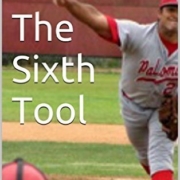
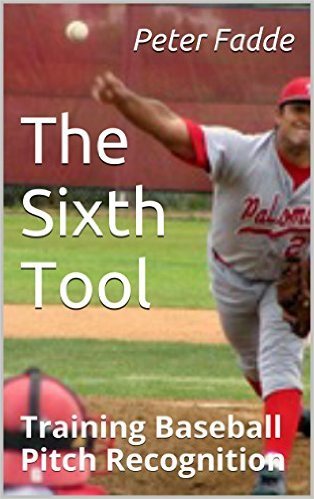
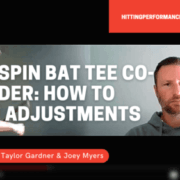
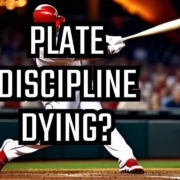


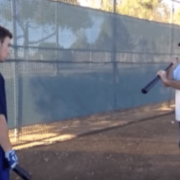

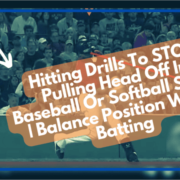



Joey, for those that don’t know or understand, this is a real game changer. I’m super interested in the occlusion video training. That and the bullpen sessions can make real differences in hitters being able determine type, location, ball and strike… The video stuff is the real key bc the hitters can do that on their own.
Major game changer. This stuff is super simple to infuse into practices. Just have to make the decision to get started and get the hands dirty with the drills. The best part is, all these drills are validated by science, and tested by professional and college teams to work in the ‘real world’.
Great teachings as usually Joey…Basically, explaining what great hitters do even though they may not even know it…and making it easier for the ones who don’t do it to see the game as they should…to add to their game and become that type of impact player that most are working so hard too but just don’t have the know how…. I always think it’s the players who get super specific in there training and there understanding who end up on top….Its like almost OCD… The kids who stir at there hands and try to feel and understand ever angle of the swing and just want to make a mental note… Trying to guess and predict the ball flight is what sets player apart…I always get annoyed with the “watch the ball hit the bat”… If you did, you just see a better blur if your trying, but you could not of possibly swung the bat correctly… You will inherently use muscles (and compressions and tensions ?) the wrong way and perhaps stick out you neck…which will give you the wrong postures…
If you swing correctly and guess and/predict correctly… You can’t possible see the bat ball collision…. The ball and bat should be a blur… One that the batter doesn’t even think about….you predict where you will hit it and your posture will reflect your prediction… Your not looking at the collision… It’s like bracing to get hit… You automatically have a posture that is best… You always square to the ball and hit it in front of your face… Sort off!!!! Great stuff with the details…My kid is 8 so it’s little over his head… Would it be possible to integrate some of these teachings in order to help the little kids overcome the fear of getting hit with the ball…I would think if possible you can get seeing the ball better and giving them confidence at the plate but it seems difficult to package it for kids ages 7 to 10…Thanks for the info Joey, it’s appreciated…
~DM
Thanks for sharing Djura. Firstly, you have to get those kids used to getting hit with whiffles, racquetballs, tennis balls, etc. Teach them to get hit using the ‘turning in towards the catcher’ technique, and when they get used to the motion, then throw to them mixing in strikes and balls at them. Once they get over fear of getting hit, train them on Dr. Peter Fadde’s techniques, even if just have them sit down and watching occlusion video of pitchers’ release points. Lots of simple drills to use with younger hitters, just keep it to 1 or 2 of them, and as they get older, add more.
I would be interested in knowing what cues they are using to recognize each type of pitch.
To Sully question about cues to look for. Batters see different things, so don’t like to be too specific. Some batters pick up skinny wrist for Curve, or sense pitcher is throwing CB uphill. Or get feel for pitcher “muscling up” for fastball. Or pickup less thrust of ball out of pitcher’s hand on change. But mostly it’s repetition with immediate feedback and let their eyes figure it out.
Thanks for the suggestion Dr. Fadde. I agree, repetition is the mother of skill. You can’t expect hitters to absorb this without doing the reps necessary to acquire the skill. I think Coach Lawson’s observations with his hitters told the story, talking about how they were practicing these Occlusion drills over the course of the season, and his hitters’ collective response was, “I don’t know how but I’m seeing the ball real well!”
Hey Joey, I’m curious, how much did the players involved struggle or feel frustrated when going through this process? Was it similar to massed vs non-massed practice?
Ryan, the pitch recognition training detailed in Dr. Peter Fadde’s book is very frustrating at first. Because most hitters aren’t used to picking up pitch cues this early. But everything new is frustrating. The more reps the hitter takes in these drills, the better and less frustrated they’ll get.